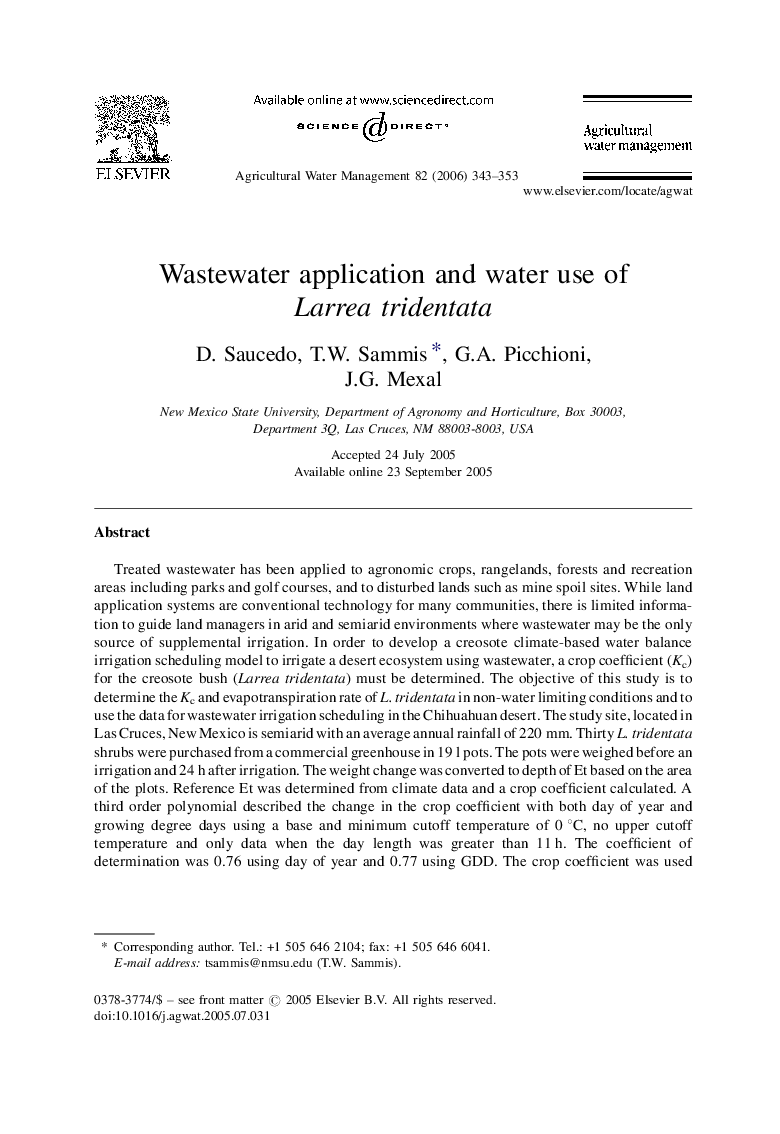| Article ID | Journal | Published Year | Pages | File Type |
|---|---|---|---|---|
| 4480630 | Agricultural Water Management | 2006 | 11 Pages |
Treated wastewater has been applied to agronomic crops, rangelands, forests and recreation areas including parks and golf courses, and to disturbed lands such as mine spoil sites. While land application systems are conventional technology for many communities, there is limited information to guide land managers in arid and semiarid environments where wastewater may be the only source of supplemental irrigation. In order to develop a creosote climate-based water balance irrigation scheduling model to irrigate a desert ecosystem using wastewater, a crop coefficient (Kc) for the creosote bush (Larrea tridentata) must be determined. The objective of this study is to determine the Kc and evapotranspiration rate of L. tridentata in non-water limiting conditions and to use the data for wastewater irrigation scheduling in the Chihuahuan desert. The study site, located in Las Cruces, New Mexico is semiarid with an average annual rainfall of 220 mm. Thirty L. tridentata shrubs were purchased from a commercial greenhouse in 19 l pots. The pots were weighed before an irrigation and 24 h after irrigation. The weight change was converted to depth of Et based on the area of the plots. Reference Et was determined from climate data and a crop coefficient calculated. A third order polynomial described the change in the crop coefficient with both day of year and growing degree days using a base and minimum cutoff temperature of 0 °C, no upper cutoff temperature and only data when the day length was greater than 11 h. The coefficient of determination was 0.76 using day of year and 0.77 using GDD. The crop coefficient was used in a water balance irrigation scheduling model to predict creosote water use under rainfall condition in the Chihuahuan desert.
